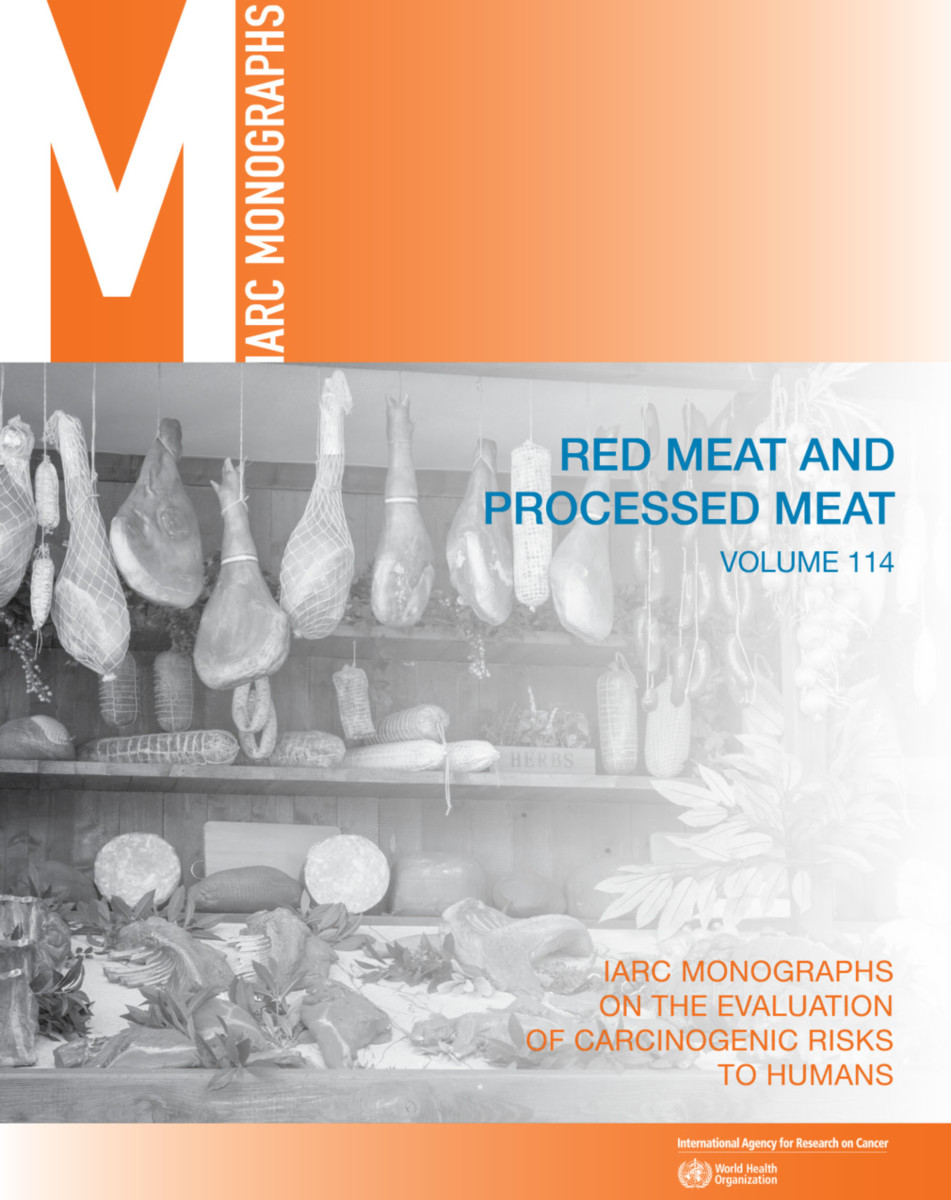Red Meat and Processed Meat
- Publisher
World Health Organization - Published
27th July 2018 - ISBN 9789283201526
- Language English
- Pages 300 pp.
- Size 8.25" x 10.25"
This volume of the IARC Monographs provides evaluations of the consumption of red meat and the consumption of processed meat.
Red meat refers to unprocessed mammalian muscle meat (e.g. beef, veal, pork, lamb) including that which may be minced or frozen. Processed meat refers to meat that has been transformed through salting, curing, fermentation, smoking or other processes to enhance flavor or improve preservation. Most processed meats contain pork or beef, but may also contain other meats including poultry and offal (e.g. liver) or meat by-products such as blood. Red meat contains proteins of high biological value, and important micronutrients such as B vitamins, iron (both free iron and haem iron), and zinc.
Carcinogens, including heterocyclic aromatic amines and polycyclic aromatic hydrocarbons, can be produced by cooking of meat, with greatest amounts generated at high temperatures by pan-frying, grilling, or barbecuing. Meat processing such as curing and smoking can result in formation of carcinogenic chemicals including N-nitroso compounds and polycyclic aromatic hydrocarbons.
An IARC Monographs Working Group reviewed epidemiological evidence, animal bioassays, and mechanistic and other relevant data to reach conclusions as to the carcinogenic hazard to humans of the consumption of red meat and processed meat. The Working Group assessed more than 800 epidemiological studies that investigated the association of cancer (more than 15 types) with consumption of red meat or processed meat, including large cohorts in many countries, from several continents, with diverse ethnicities and diets.
International Agency for Research on Cancer
The International Agency for Research on Cancer (IARC) is part of the World Health Organization. IARC's mission is to coordinate and conduct research on the causes of human cancer, the mechanisms of carcinogenesis, and to develop scientific strategies for cancer control. The Agency is involved in both epidemiological and laboratory research and disseminates scientific information through publications, meetings, courses, and fellowships.


